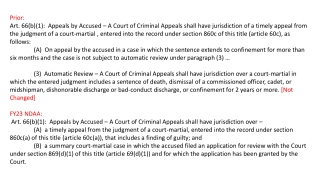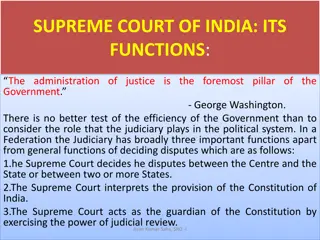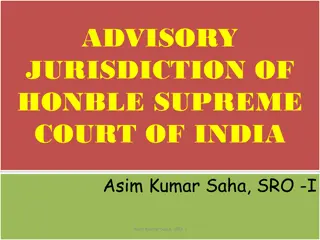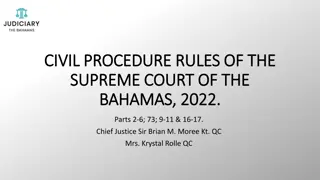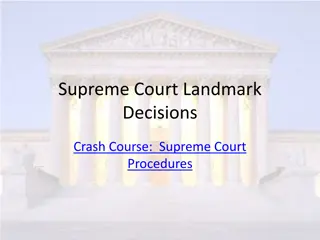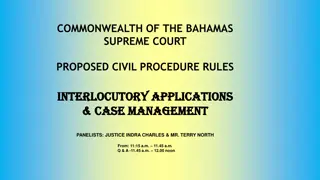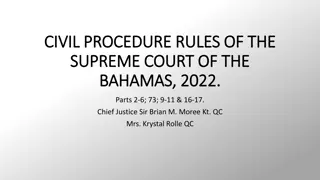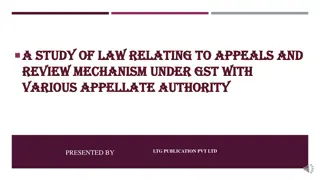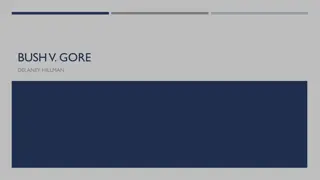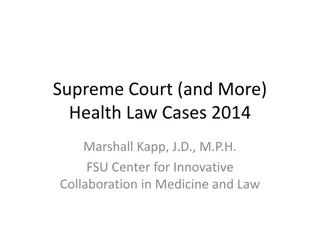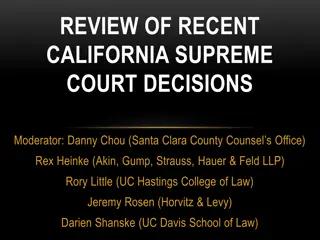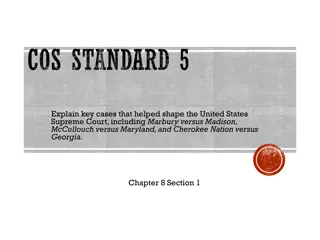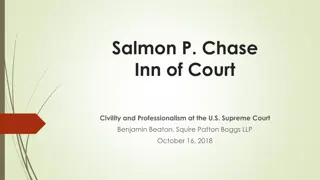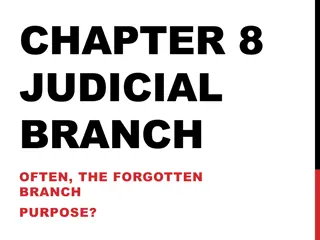Understanding the Influences on Supreme Court Decision Making
Explore the essential aspects that influence how Supreme Court judges decide cases, including issues like judicial restraint vs. activism, influences on decision-making, precedent, and judicial philosophy such as originalism. Gain insights into the complexities surrounding constitutional interpretation and the different schools of thought guiding justices in their roles within the judicial system.
Download Presentation

Please find below an Image/Link to download the presentation.
The content on the website is provided AS IS for your information and personal use only. It may not be sold, licensed, or shared on other websites without obtaining consent from the author. Download presentation by click this link. If you encounter any issues during the download, it is possible that the publisher has removed the file from their server.
E N D
Presentation Transcript
Warm-up: Confirmation of Justice Sonia Sotomayor 1. What did she say?
Constitutional Interpretation ESSENTIAL QUESTION: WHAT INFLUENCES HOW THE SUPREME COURT JUDGES DECIDE ON CASES?
Judicial Restraint vs Judicial Activism Citizens, interest groups, and businesses all have opinions about the what the role of the supreme court should be and they are typically split into two groups. Those who support judicial restraint believe that the Court should avoid overturning laws passed by democratically elected bodies. Those who support judicial activism believe that the Court must step in when Americans' rights are violated.
Influences on Decision making The Supreme court is made up of 9 Justices who, once confirmed, serve for life. The Justices must decide how to determine what the text of the Constitution means when the words are unclear. They must decide what is "cruel and unusual punishment" or what and "unreasonable search and seizure" is. Two major influences on the decisions: justices make are precedents and judicial philosophy.
Precedent One of the basic principles of law in making judicial decision is "let the previous decision stand" Under this principle, once a Court rules on a case, it becomes a precedent or model for later cases that raise the same legal issue.
Judicial Philosophy Judicial Philosophy is a justice's idea about what guidelines to use when interpreting the Constitution. Each person's philosophy is shaped by their heritage and their lived experiences, which guides them toward a specific school of thought. Because every Supreme Court decision is explained in a written opinion, people who study the Court have developed some ideas about the different philosophies of today's justices. There are two main groups: Originalism and a Living Constitution.
Originalism If a justice believes in Originalism then they believe we should stick as closely as possible to the Constitution as the people who wrote it and adopted it intended. This approach leads to a fixed meaning of the Constitution and its followers argue that if a judge does not follow the original intention then they are choosing their own meanings and that is not ok. On the other hand critics of this philosophy argue that it is impractical to be governed by the views of people who lived 200 years ago due to current technologies.
A Living Constitution If a justice believes in a "living" Constitution then they believe that modern society should be considered when interpreting and the words of the Constitution should expand to meet our needs. Justices who follow this approach argue that looking at multiple sources to make decisions based on the values in the Constitution and not just the historical record is the best way to serve the people. Critics of this philosophy say it give judges room to "make up the law" and that although society is advancing the meaning of the Constitution remains the same
Should we have terms for judges? On the back of your viewing guide complete the terms for federal judges activity for today s extension. Use Textbook page 427 for additional information.


